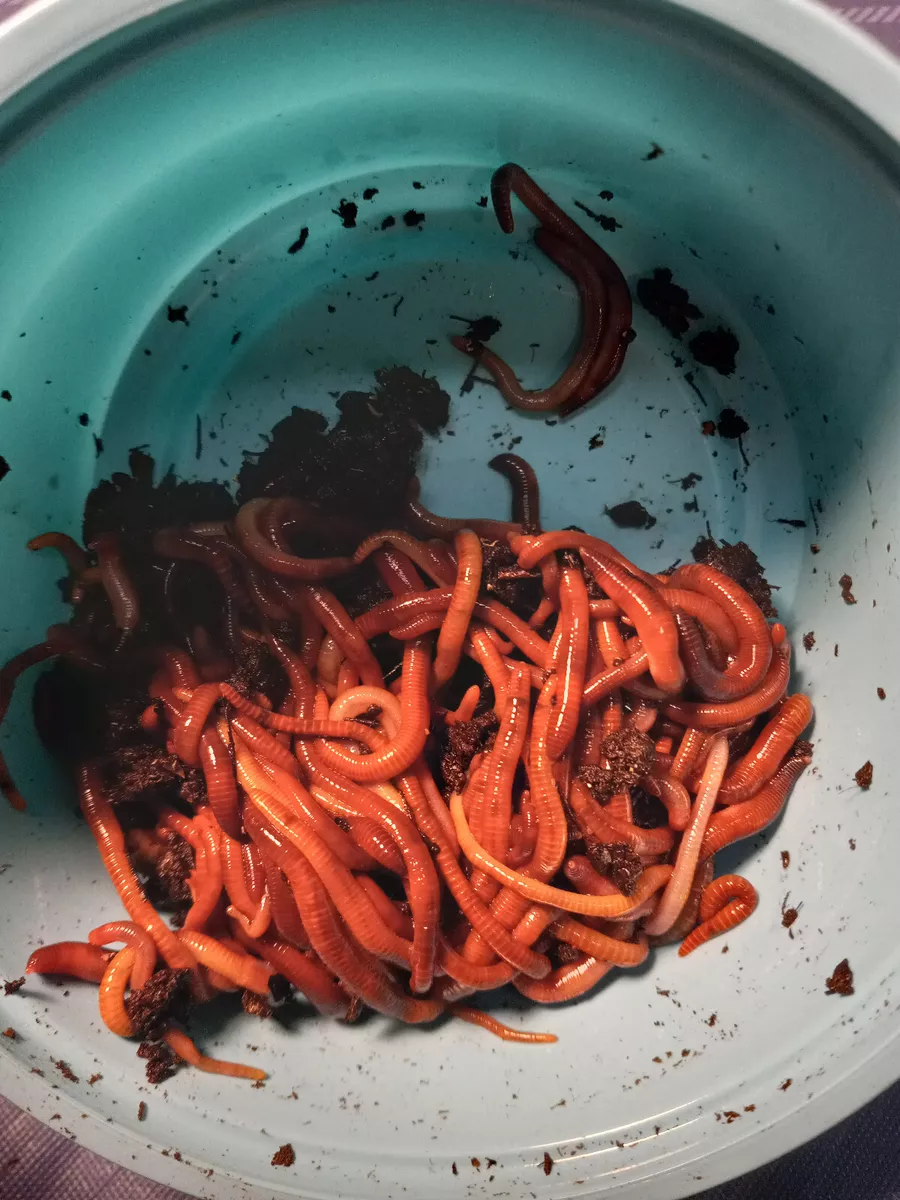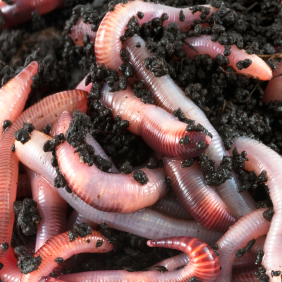Understanding the Benefits of Red Wiggler Composting: Just How This Effective Method Changes Organic Waste Into Nutrient-Rich Dirt Changes
Red Wiggler composting, using the species Eisenia fetida, provides an engaging strategy to organic waste administration, transforming kitchen scraps and lawn particles into beneficial soil amendments. This technique not just boosts soil fertility however additionally addresses pushing environmental issues, consisting of land fill waste reduction and greenhouse gas discharges.
What Are Red Wigglers?
Red wigglers, medically recognized as Eisenia fetida, are a species of earthworm that play an essential function in vermicomposting systems. These worms are defined by their reddish-brown color, segmented bodies, and a distinct ability to prosper in organic-rich atmospheres, making them ideal for composting applications - Red Wiggler Composting. Unlike their garden-dwelling counterparts, red wigglers favor to populate the top layers of dirt, where rotting matter is plentiful
Commonly determining between 3 to 4 inches in size, red wigglers have a high reproductive rate, allowing them to increase quickly under optimal problems. They possess an unique digestion system that enables them to process natural waste effectively, transforming it into nutrient-rich spreadings, which are extremely beneficial for plant development.
Their tolerance to differing moisture degrees and temperature ranges additionally improves their utility in vermicomposting setups, making them a preferred choice amongst composting enthusiasts. In addition, red wigglers are aerobic microorganisms, which demands a well-aerated composting environment, making sure effective decay. Recognizing the biological qualities and actions of red wigglers is necessary for optimizing their usage in lasting waste management methods.

Benefits of Vermicomposting
Utilizing the power of vermicomposting offers a multitude of ecological and farming benefits. It dramatically minimizes organic waste in land fills, consequently reducing methane emissions, a powerful greenhouse gas. By diverting food scraps and backyard waste to vermicomposting, we support a more lasting waste administration system.
Additionally, vermicomposting boosts soil health. The spreadings created by red wigglers are abundant in necessary nutrients, microbes, and enzymes, boosting soil framework and fertility. This nutrient-rich change promotes durable plant development and boosts water retention, decreasing the demand for chemical fertilizers.
Moreover, vermicomposting fosters biodiversity in the dirt ecological community. The intro of advantageous microorganisms from worm spreadings aids in illness reductions and nutrient cycling, developing a healthier setting for plants.
Economically, vermicomposting minimizes the expenses related to chemical inputs and waste disposal. Farmers and garden enthusiasts can grow premium fruit and vegetables at lower costs, adding to food security and sustainability.
Exactly How to Start Composting
Beginning a composting endeavor can be a uncomplicated and rewarding process. To start, select an appropriate place that is well-drained and obtains partial sunshine. This will certainly help keep a well balanced temperature level, essential for the composting process. Next, select a garden compost container or create a designated area in your garden, ensuring it is quickly available for including products and harvesting compost.
Collect natural products such as cooking area scraps, backyard waste, and shredded paper. Purpose for a well balanced mix of 'eco-friendly' materials, high in nitrogen (e.g., fruit scraps, coffee premises), and 'brownish' materials, rich in carbon (e.g., dried out fallen leaves, cardboard) A ratio of roughly 2:1 eco-friendly to brown materials is ideal.
Beginning layering your products, guaranteeing sufficient air flow by turning the pile routinely. This promotes cardio decay, decreasing odors and speeding up up the procedure. Monitor dampness degrees; the garden compost should seem like a moist sponge but not extremely wet.
Nutrient Account of Vermicompost
Composting, particularly with red wigglers, generates a nutrient-rich product understood as vermicompost. Furthermore, it gives micronutrients like iron, magnesium, and calcium, fostering durable plant here advancement and improving dirt wellness.
The microbial task existing in vermicompost further enhances its account, presenting valuable microorganisms and fungis that advertise nutrient availability and uptake in plants. This biological element help in subduing plant diseases and boosting soil structure, bring about boosted water retention and oygenation.

Ecological Impact of Composting
The ecological influence of composting, particularly with using red wigglers, is profound and diverse. This method dramatically minimizes the quantity of organic waste sent to garbage dumps, which subsequently decreases greenhouse gas emissions, specifically methane-- a potent contributor to climate modification. By drawing away natural products from land fills, red wiggler composting not only assists alleviate ecological destruction yet additionally advertises lasting waste monitoring methods.

Additionally, composting contributes to carbon sequestration, as the process records carbon dioxide from the ambience and stores it in the dirt. This all-natural procedure help in combating climate adjustment while enriching the dirt - Red Wiggler Composting. Overall, red wiggler composting provides a practical, eco-friendly option for waste management and environmental sustainability, promoting much healthier environments and a more lasting future
Final Thought
In verdict, Red Wiggler composting serves as an effective approach for transforming natural waste right into useful dirt modifications. The procedure not only improves soil fertility and structure however also reduces environmental issues linked with waste disposal.
Red Wiggler composting, using the types Eisenia fetida, offers a compelling approach to natural waste management, transforming kitchen scraps and yard debris right into important soil amendments. Unlike their garden-dwelling equivalents, red wigglers favor to live in the upper layers of soil, where rotting matter is bountiful.
The spreadings generated by red wigglers are rich in important nutrients, microorganisms, and enzymes, improving soil structure and fertility. The nutrient-rich results of red wiggler activity improve soil framework, boost water retention, and promote biodiversity within the soil ecological community.In verdict, Red Wiggler composting serves as an effective method for transforming organic waste right into useful dirt modifications.